![]()
|
Moore
Bros |
Location and period of operation:
|
Moore Bros |
Longton |
1872 |
1905 |
|
Manufacturers of china tableware and high quality ornamental pieces at St. Mary's Works, Longton, Stoke-on-Trent, England Moore Brothers designs were inspired by the Arts and Crafts Movement and later, Art Nouveau, reflecting a shift toward artistic, decorative pottery that emphasized craftsmanship and originality. Their work often featured flowing, organic shapes and intricate decoration. They used a variety of glazes, including rich, textured glazes that gave their pieces a unique depth of colour.
|
Previously: Samuel Moore (& Son) (1859 - 1870/2)
Subsequently: Bernard Moore (at the Wolfe Street works) (1905-1915)
on the Moore family of potters
Moore Brothers
manufacturers of Art Porcelain, China, &c
St. Mary's Works, Longton, StaffordshireThe Pottery Gazette, American and Canadian Edition, January 1st 1880
Moore Brothers
St. Mary's Works, Longton, Staffordshire
Manufacturers of Art Porcelain, China, &c
Specialities in Raised Flower Goods and Artistic ChinaThe Pottery Gazette, 1st July 1880
| The statement 'Founded 1840' refers to the previous business of Hamilton & Moore at the St. Mary's Works |
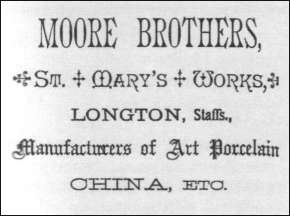
Advertisement from 1889 Keates directory
courtesy: R. K. Henrywood, Staffordshire Potters 1781-1900
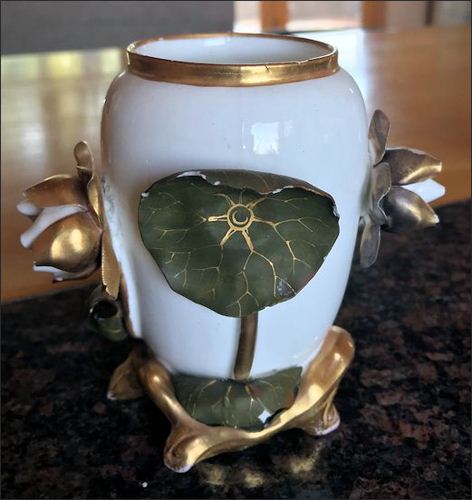
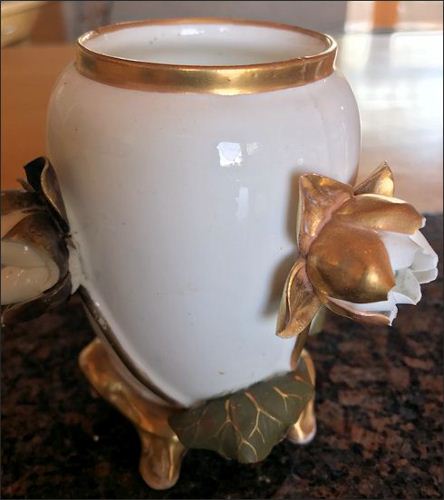 Porcelain raised flower vase |
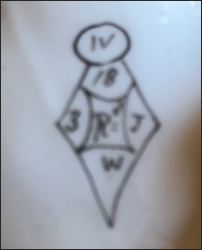
the registration diamond shows that this pattern was first registered by Moore Bros. on the 18th March 1880 |
photos courtesy: Betsi Mead
|
Made by Moore Bros. during
the 1880's/90's it takes the form of a hollow flower head sitting in a
pair of cornucopia like stems which have 3 hollow apertures for
stems/buds, the whole being adorned to each side with an orchid.
This figure is known, decorated in the same colours, bearing the BM mark indicating decoration at some later date at the Wolfe Street premises.
|
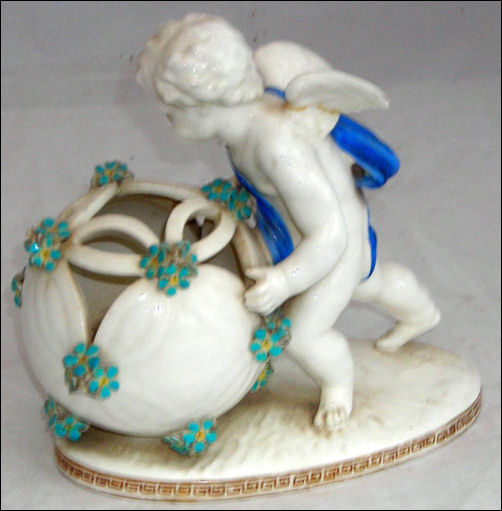
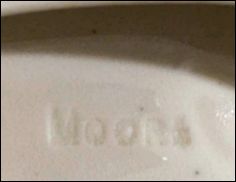
Moore Bros flower vase
with cherub
impressed 'MOORE' on base
| The cherub centerpieces produced by Moore Brothers, England, were some of the most celebrated and distinctive pieces in their
production. These pieces were highly decorative, combining intricate craftsmanship with a sense of playful expression and elegance. They were created with the intent to be visually striking as well as symbolic. Cherubs were commonly associated with love, beauty, and innocence in classical art, and their presence in these centerpieces added a romantic and idealized element to the pottery. The pieces were designed to serve as both functional objects and decorative art, often used as centerpieces on tables or display cabinets. |
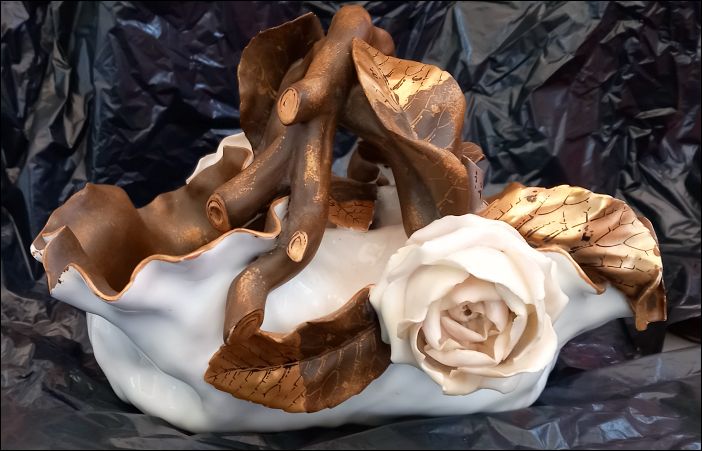 porcelain centre piece with raised roses, leaves and branches the hand painted number '31' on the base could be a pattern number
|
printed mark with the Moore name in a ribbon above a representation of a globe c. 1880-90 |
photos courtesy: Claire Howorth
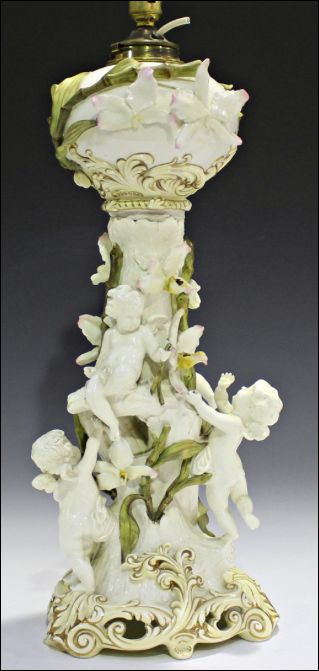
|
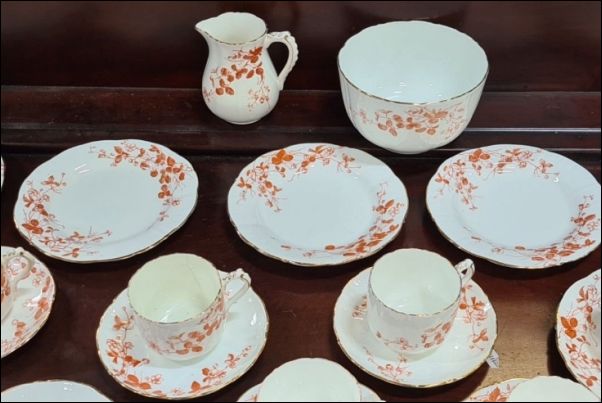
|
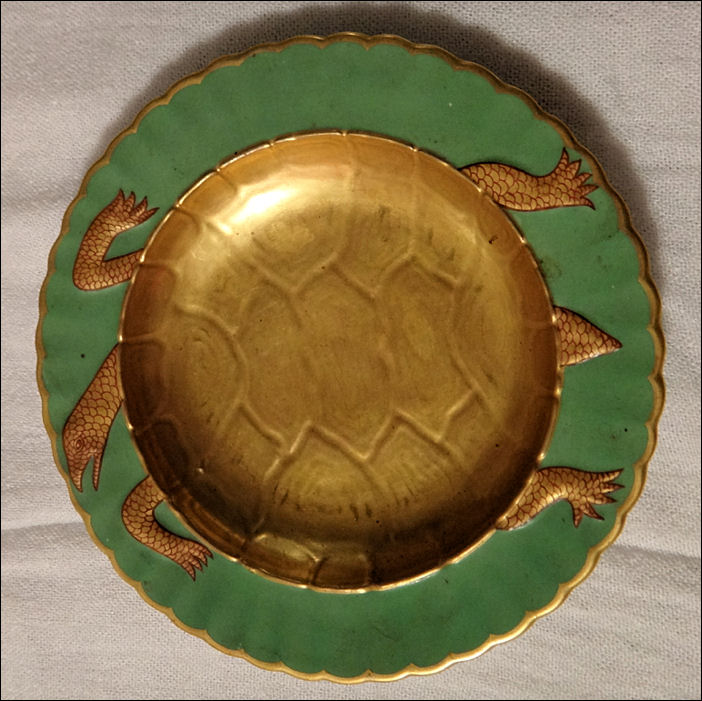
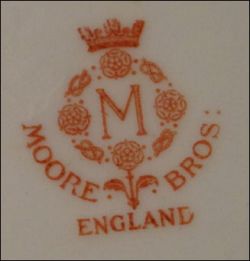
small Moore Bros plate dating from c.1902 -1905
the subject is a turtle picked out in gold
on a green glaze background
Marks used on ware for identification:
MOORE
MOORE BROS
 Moore |
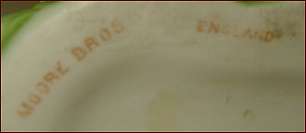 Moore Bros England |
standard impressed or printed marks c.1872-1905
'England' was generally used from 1891
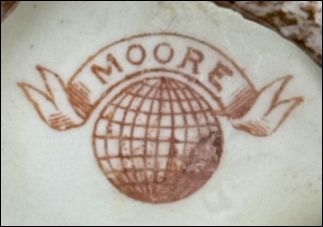 Moore |
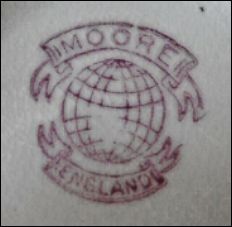 Moore England |
standard printed marks c.1880-1902
'England' was generally used from 1891
 Moore Bros England printed mark c.1902-1905 occasionally as a printed mark |
click for more information on
the works and Moore family history:-
Questions, comments, contributions? email: Steve Birks